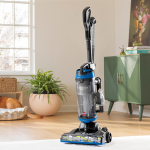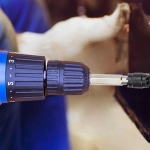Are you an electrician, contractor, or a DIY enthusiast looking for the best electrical fish tape to make your wiring projects a breeze? Navigating a variety of brands and models can be tough, but finding the right tool is essential.
A high-quality fish tape is a game-changer for any electrical job, from running new wires through conduit to “fishing” cable through a wall. The right tool not only saves you time and effort but also prevents damage to your wires and your workspace. When you’re dealing with tight spaces, multiple bends, and long runs, having a reliable and durable tool is non-negotiable. Whether you need a flexible tape for tight turns or a rigid one for long distances, we’ve got you covered.
In this roundup, we’ve done the hard work for you, reviewing some of the market’s leading models. We’ll delve into their features, performance, and key differences to help you choose the ideal tool for your specific needs. From steel tapes for heavy-duty jobs to non-conductive options for added safety, we’ll help you find the best electrical fish tape. Let’s get started with our top picks.
Top 5 Best Electrical Fish Tapes
7 Best Electrical Fish Tapes Review
1. Klein Tools 56335 Flat Steel Electrical Fish Tape
The Klein Tools 56335 is a reliable and durable fish tape designed for electricians and DIYers handling small to medium conduit runs. With its 25-foot length, this tool is ideal for residential projects and quick fixes. Made from high-carbon spring steel, it offers an excellent balance of stiffness and flexibility, allowing it to navigate bends without kinking. Its flat profile is especially useful for tight spaces and conduits where a round tape might get stuck.
Performance is enhanced by an optimized housing that significantly reduces payout effort, making the job less strenuous. The slim-profile plastic tip is a notable feature, as it glides through conduits with ease and minimizes snagging. Moreover, the laser-etched markings in 1-foot increments are a simple yet incredibly useful feature, allowing for accurate measurement of conduit runs. The protective coating on the tape helps to prevent corrosion, although care should still be taken when working in wet environments.
Ultimately, the Klein Tools 56335 is a solid choice for those who need a dependable and easy-to-use tool for everyday tasks. It’s perfect for residential electricians and homeowners who value precision and durability. While it might not be suitable for very long commercial runs, its compact design and performance make it a staple for any toolbox.
| PROS | CONS |
|---|---|
|
|
2. Klein Tools 56334 Electrical Fish Tape
The Klein Tools 56334 is a heavy-duty option designed for professional electricians tackling long and tough wire pulls. With a substantial 240-foot length, this steel fish tape is built for commercial and industrial applications where long distances and heavy-gauge wires are common. The 1/8-inch wide steel tape provides exceptional column strength, pushing through challenging conduits with minimal effort. This model is a testament to Klein Tools’ commitment to producing a robust and reliable wire pulling tool.
This tool features a durable polypropylene case with a multi-position handle, providing a firm, steady grip for both feeding and rewinding. The case’s design is engineered to minimize friction and prevent binding, which is crucial for such a long tape. Like other Klein models, it includes descending laser-etched markings, which are incredibly helpful for measuring conduit runs and tracking how much tape is left. The protective coating also helps to resist corrosion from non-contact moisture.
This fish tape is an ideal choice for professionals who frequently work on large-scale projects. Its superior strength and length make it suitable for pulling large bundles of wire, making it a valuable asset for any major job site. While it may be overkill for simple household tasks, its robust construction and ergonomic design ensure it stands up to the demands of daily, heavy use.
| PROS | CONS |
|---|---|
|
|
3. Klein Tools 56331 50-Foot Electrical Fish Tape
The Klein Tools 56331 is a highly popular and versatile **electrical fish tape**, providing a great balance of length and usability. At 50 feet, it’s a perfect middle-ground option that is long enough for most residential and many light commercial projects. Made from durable 1/8-inch wide steel, it offers the necessary rigidity for pushing through conduit, but with enough flexibility to handle a variety of bends and turns. It’s a classic tool that has earned its reputation as a reliable workhorse.
The design of this model focuses on user comfort and efficiency. It features an optimized housing that minimizes the effort required to pay out the tape, and a multi-position handle that provides a firm, slip-resistant grip. The laser-etched markings every 12 inches are a fantastic bonus, allowing for quick and accurate measurement on the job. The high-impact polypropylene case is built to last, protecting the tape from the rigors of daily use on a job site.
This is an excellent tool for both professional electricians and serious DIYers. Its dependable performance and convenient 50-foot length make it a go-to choice for a wide range of wiring jobs. It’s particularly well-suited for interior wall pulls and short conduit runs. While it lacks the extreme length of some professional-grade tapes, it more than makes up for it with its durability and user-friendly features.
| PROS | CONS |
|---|---|
|
|
4. RamPro Fish Tape Wire Puller 50ft
The RamPro Fish Tape offers a budget-friendly and practical solution for both professional electricians and DIY enthusiasts. This 50-foot, 1/8-inch steel wire puller is designed for simplicity and reliability. Its durable housing is built to withstand daily use, while the firm yet flexible steel tape is perfect for pulling wires through challenging spaces. This tool is a great option if you need a reliable fish tape without a high price tag.
A standout feature of this product is its improved comfort grip handle and built-in thumb lock, which make it easier to pull and rewind wire without tangling. The double-loop tip is effective for securing wires, ensuring a smooth and successful pull. This tool is especially useful for running electrical or communication wires through walls, ceilings, and conduits. While it may not have some of the advanced features of more expensive models, it excels at its core function of a headache-free wire puller.
Overall, the RamPro 50ft fish tape is a strong contender for those who need a no-frills, dependable tool. It is particularly well-suited for homeowners and contractors who don’t want to invest in a premium brand but still require a durable and effective wire fishing tool. While it lacks laser-etched markings, its user-friendly design and affordable price point make it a highly practical choice for a wide range of tasks.
| PROS | CONS |
|---|---|
|
|
5. StartFine Fish Tape Wire Puller 32FT
The StartFine Fish Tape provides a unique and flexible alternative to traditional steel tapes. This tool is a great choice for those who need to navigate tight bends and complex routes. Made from plastic-coated steel, it strikes a perfect balance between flexibility and rigidity, so it won’t break if bent too much like some fiberglass options, nor will it curl excessively. Its non-conductive plastic coating makes it a safer option for a variety of installations, including those involving telecom and data cables.
A key feature is the 360° available head wheel, which is designed to make navigating bends much easier and reduces the chance of getting snagged. This model also comes with a convenient fish tape fastener, which provides a secure connection between the tape and the wire you’re pulling, preventing it from disconnecting mid-pull. The design is specifically optimized for smaller conduit and is a great solution for intricate wiring jobs where traditional fish tapes may struggle.
This tool is a specialized but highly effective option for those working with smaller conduits and numerous bends. It’s not designed for pulling thick, heavy cables, but its flexibility and non-conductive properties make it an excellent choice for a variety of tasks where safety and maneuverability are paramount. For telecom installers and homeowners running data lines, this is one of the **best electrical fish tape** options to consider.
| PROS | CONS |
|---|---|
|
|
6. boeray 11′ Fiberglass Electrical Wire Running Kit
The boeray 11′ Fiberglass Kit is not a traditional fish tape but a versatile rod system. This tool is a fantastic solution for “fishing” wires through wall cavities, ceilings, and other hidden spaces. Made from fiberglass, it is non-conductive, which is a significant safety benefit when working around live circuits. The low-friction design of the rods allows them to glide easily through conduit and other spaces without binding, which is a common problem with traditional tape.
What sets this kit apart is its modularity and multi-functionality. The 10 included rods can be screwed together to achieve the required length, up to 11 feet, and can even be combined with other kits for longer runs. The kit also comes with five different attachments, including a chain noodle and hooks, providing solutions for a variety of challenging situations. The included carrying case keeps all the components organized and easy to transport, making it a professional and convenient solution.
This kit is a must-have for those who frequently work on short runs or complex, tight-access jobs. While it lacks the length for long conduit runs, its extra rigidity and non-conductive material make it a superior choice for guiding network and other low-voltage cables in residential and commercial settings. It’s an essential item for any electrician or handyman who needs a precise and safe way to route cables.
| PROS | CONS |
|---|---|
|
|
7. KOOTANS 22FT Fiberglass Electrical Wire Running Kit
The KOOTANS 22FT Fiberglass Kit is another excellent modular system for fishing wires, particularly in hard-to-reach areas. This kit provides a versatile alternative to traditional coiled tapes, with a generous 22-foot total length. Made from high-quality fiberglass, the rods are non-conductive, providing a safe option for both low and high-voltage applications. Their low-friction design ensures they can be easily pushed through conduits, walls, and ceilings without getting snagged.
The kit includes 16 individual rods that can be screwed together to achieve the desired length, allowing you to customize the tool for each job. The fiberglass is strong yet flexible, and the bright yellow color of the rods makes them highly visible in dark spaces like attics or crawl spaces. This is a significant advantage, as it makes it much easier to locate and retrieve the tool. The included accessories, such as hooks and connectors, further enhance the kit’s versatility. It all comes neatly packed in a transparent plastic case for easy storage and portability.
This kit is an ideal solution for a variety of home wiring installations, from networking to running speaker cables. It offers a higher degree of control and maneuverability than a traditional coiled tape, making it perfect for navigating complex pathways. While it’s crucial not to bend the rods too sharply to prevent breakage, the KOOTANS kit offers a safe, efficient, and highly visible way to tackle a variety of wire-pulling jobs, making it one of the **best electrical fish tape** alternatives on the market.
| PROS | CONS |
|---|---|
|
|
How to Choose the Best Electrical Fish Tape
Selecting the **best electrical fish tape** is a crucial step for any wiring project. This simple yet essential tool is used to pull wires and cables through conduits, walls, and other enclosed spaces. The right tape makes a difficult, time-consuming task much easier and safer. A good fish tape should be flexible enough to navigate bends but rigid enough to push through long, straight runs. Choosing wisely will save you from frustration and potential damage to your home or wiring.
Tape Material
The material of a fish tape dictates its performance and safety. The most common options are steel and fiberglass. Steel tapes are highly durable and offer excellent pushing power, making them ideal for long and difficult conduit runs. However, they are conductive, so you must always ensure the power is off before use. Fiberglass tapes are non-conductive, making them a safer choice when working near live circuits, and they are also lighter and more flexible.
Tape Length
The length of the tape is a key consideration. Tapes come in various sizes, typically ranging from 25 to 240 feet. For most residential jobs, a 50-foot or 100-foot tape is sufficient. For larger commercial or industrial projects with long conduit runs, a 200-foot or longer tape is necessary. Always choose a tape that is slightly longer than your anticipated run to provide a comfortable working margin.
Tape Width and Profile
The width and profile of the tape affect its ability to navigate bends and obstructions. Flat tapes are great for tight spaces and pushing through crowded conduits, while round or braided tapes are often more flexible and can be easier to maneuver around multiple bends. Thicker tapes generally offer more pushing strength, but may be less flexible for tight turns.
Case and Handle Design
The case and handle are critical for usability. A well-designed case with a comfortable, slip-resistant handle reduces fatigue and improves control. Look for features like a thumb lock or a smooth, low-friction reel system. Some models offer multi-position handles, which allow for a better grip in various situations, and high-impact plastic cases that protect the tape from drops and damage.
Safety and Features
Finally, consider extra features that improve safety and efficiency. Non-conductive tapes are a great safety feature, and some models even include glow-in-the-dark rods for visibility in dark areas. For a professional finish, you’ll also need tools like a good RJ45 crimper crimping tool or a fiber optic stripping tool. Laser-etched markings on the tape allow for accurate measurement, which is a huge time-saver. Additionally, using a network cable tester can help verify your work after the pull.
Electrical Fish Tape Maintenance and Safety
Proper maintenance and safety practices are vital to extend the life of your fish tape and prevent accidents. Always wear gloves and safety glasses when handling a fish tape. Before starting any job, make sure to de-energize circuits to avoid the risk of electrical shock, especially when using a steel tape. When pulling the tape back, do so slowly and steadily to prevent kinks and snags. After each use, wipe the tape clean with a dry cloth before reeling it back into its case to prevent dirt, debris, and moisture from accumulating. If working in a wet environment, a protective coating can help, but drying the tape is still the best practice to avoid rust.
Keeping your tool in good condition not only ensures its longevity but also guarantees it will perform reliably when you need it most. By adhering to these simple steps, you can avoid common issues like a rusted or damaged tape and ensure a smooth workflow. Don’t forget that a complete toolkit also includes a great punch down tool for clean and efficient connections.
How to Use an Electrical Fish Tape
Using a fish tape is a straightforward process, but a few key steps will ensure a smooth and successful wire pull.
- Preparation and Safety: Before you begin, always turn off the power to the circuit you’ll be working on. Unreel a sufficient length of tape, ensuring it is free of kinks.
- Feeding the Tape: Insert the end of the fish tape into the conduit or wall opening. Push the tape forward by hand, applying steady pressure. If you encounter resistance, gently twist and push to help the tape navigate bends. For long or difficult runs, using a wire-pulling lubricant can greatly reduce friction.
- Attaching and Pulling Wires: Once the tape’s tip emerges at the other end, securely attach your wires. Twist the wires together and then tape the connection tightly to create a smooth, tapered bundle that won’t snag. With a partner at the feeding end, begin to pull the tape back, slowly and steadily.
- Finishing the Job: Once the wires are successfully pulled through, remove the tape and wires. Clean and dry the tape before reeling it back into its housing for storage.
Frequently Asked Questions
What is a fish tape used for?
A fish tape is a tool used by electricians and installers to route new wires and cables through conduits, ceilings, walls, or other enclosed spaces. It is a long, flexible strip of steel or fiberglass that is fed through the space to pull the wire back through. It makes the difficult process of pulling wire through tight, inaccessible areas much easier and safer.
Can I use a fish tape on my own?
Yes, you can use a fish tape on your own for shorter, less complex runs. However, for long or very difficult pulls, it is highly recommended to have a helper. One person can feed the wire and tape while the other person pulls, which helps to prevent the wire from getting tangled and reduces the overall effort required.
What is the difference between a steel and a fiberglass fish tape?
The main difference is conductivity. Steel tapes are conductive and offer more pushing strength for heavy-duty jobs but must be used with caution around live wires. Fiberglass tapes are non-conductive, making them a safer option, especially for low-voltage data and communication lines, but they are generally less rigid than steel tapes.
Can you use a fish tape to push wires?
Yes, a fish tape is primarily designed to be pushed through a conduit or wall space, but its main purpose is to pull the new wires back with it. The tip of the tape is designed to have wires attached to it, which are then pulled back through the length of the run.
How do I prevent my fish tape from kinking?
To prevent a fish tape from kinking, always unreel it in a slow and controlled manner. Avoid pulling or reeling with excessive force. If you encounter an obstruction, pull the tape back a bit and try to navigate the blockage by gently twisting. A low-friction case and proper lubrication can also help to prevent kinking during long pulls. For more information, you can visit the Wikipedia page on fish tape.
Final Thoughts
Choosing the **best electrical fish tape** for your needs can dramatically improve your efficiency and the quality of your work. By considering factors like tape material, length, and handle design, you can find a tool that not only fits your budget but also stands up to the demands of your projects. Remember to prioritize safety by always de-energizing circuits and following proper usage guidelines. The right tool is a long-term investment that will pay off with every successful wire pull.
For most buyers, we recommend the Klein Tools 56331 50-Foot Electrical Fish Tape for its excellent balance of features and durability, making it a perfect workhorse for a wide range of jobs. If you need a specialty tool for hard-to-reach areas or desire a non-conductive solution, the KOOTANS 22FT Fiberglass Electrical Wire Running Kit is an outstanding choice that offers superior maneuverability and safety.
Amranul is a highly experienced product review writer with a passion for helping readers make smart, informed purchasing decisions. Since 2018, he has specialized in thoroughly researching and analyzing a wide range of products to deliver honest, in-depth reviews. Amranul combines technical accuracy with clear, engaging writing to break down complex product features and highlight true user value. Look for his reviews to find reliable information and expert insights you can trust before you buy!












